Trim command in AutoCAD
TRIM (Command)
You have two options for trimming objects: Quick mode and Standard mode.
Quick Mode is the fastest mode. To trim items, individually select them, push and drag to start a freehand selection route, or pick two empty positions to designate a crossing Fence. All objects operate as cutting edges by default. Objects that cannot be cut are instead removed.
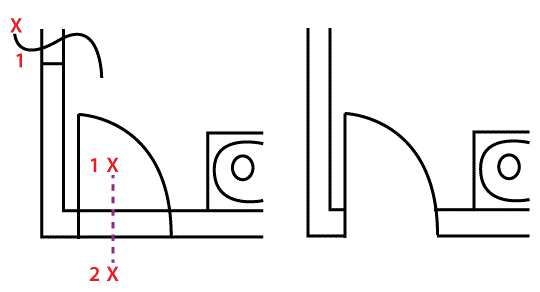
The following are the Quick mode options:
- Cutting the corners
- Fence (not listed as an option)
- Crossing
- Mode
- Project
- Erase
The Standard mode: To trim items, pick the borders first and then press Enter. Then choose the things that need to be cut. At the initial Select Objects window, hit Enter to utilize all objects as bounds.
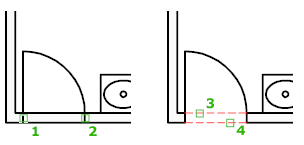
The following are the Standard mode options:
- Choose your cutting edges...
- Cutting the corners
- Fence
- Crossing
- Mode
- Project
- Edge
- Erase
- Undo
Note: The TRIMEXTENDMODE system variable determines whether the TRIM command runs in Quick or Standard mode by default.
In either Quick or Standard mode, the following instructions appear.
Select cutting edges: This option specifies one or more items to be used as a trim border. The cutting edges and objects to be trimmed are projected onto the XY plane of the current user coordinate system by TRIM (UCS). When you choose an object in Quick mode that does not cross a boundary, it is deleted instead.
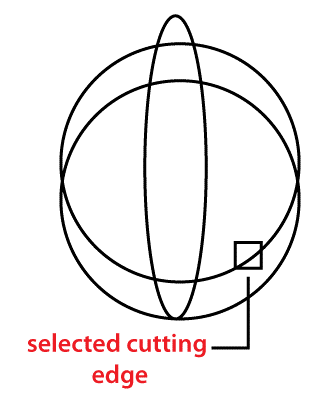
Note that you can only use the single selection, Crossing, Fence, and Pick All options to select cutting edges that include blocks.
To trim or expand an item, pick it and hold down the shift key...
Specifies which parts of an object should be trimmed separately. Shift-select expands rather than trims the chosen items. This feature makes switching between cutting and extending simple.
Choose all
All items in the design can be utilized as trim limits, according to this setting.
Trimmable item
The object to trim is specified. If more than one trim result is feasible, the outcome is determined by the location of the initial selection point.
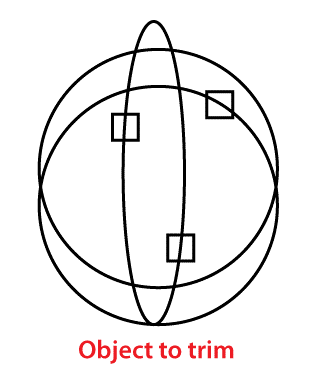
Shift-select to expand Extends rather than trims the chosen items. This feature makes switching between cutting and extending simple.
Cutting the corners
To specify the boundary edges to which you wish to trim an item, use the extra chosen objects.
Fence
All items that cross the selection fence are selected. The selection fence is a set of temporary line segments with two or more fence locations that you define. There is no closed loop in the selection fence.
Crossing
Objects that are within and cross a rectangle region specified by two points are selected.
Note that certain object crossing selections to be cut are confusing. The selection is resolved by moving clockwise around the rectangle crossing window from the starting point to the first object met.
Mode
Sets the default trim mode to either Quick or Standard, which utilizes all objects as possible cutting edges.
Project
When trimming objects, this property specifies the projection technique.
None
No projection is specified. Only items that intersect with the cutting edge in 3D space are trimmed using this command.
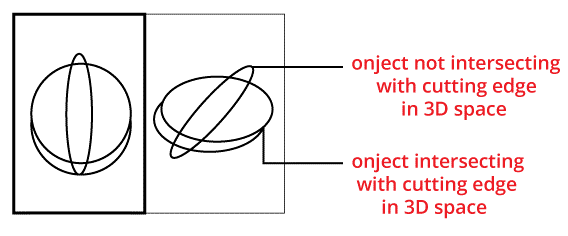
UCS
Specifies the current UCS's projection into the XY plane. Objects that do not intersect with the cutting edge in 3D space are trimmed using this command.
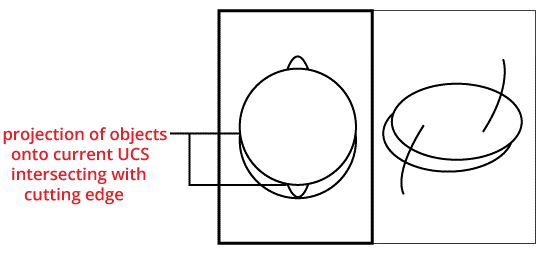
View
The current view direction is used to specify the projection. The command cuts items in the current view that cross the border.
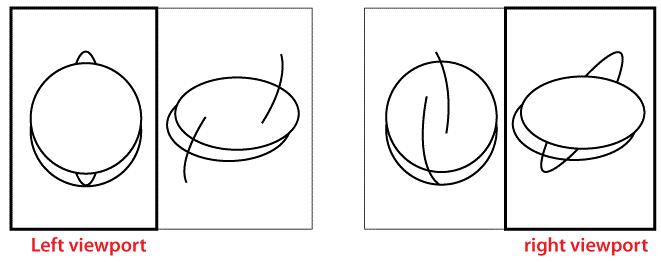
Edge
Determines whether an item is trimmed at an extrapolated edge of another object or just when it contacts it in 3D space.
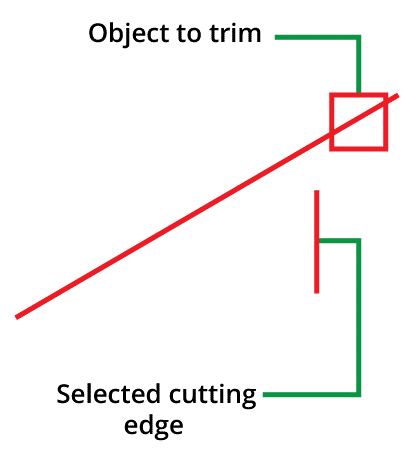
Extend
The cutting edge is extended along its natural path to intersect an item in three-dimensional space.
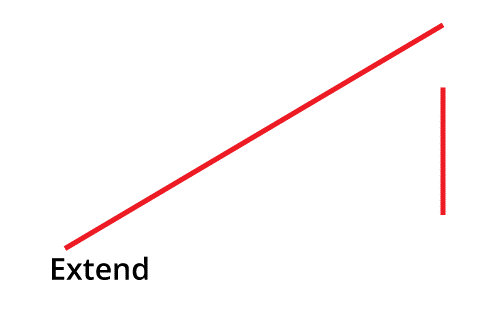
Note: When the EDGEMODE system variable is set to 1, the chosen item is automatically trimmed to an imaginary extension of the cutting edge.
No Extension
The item will only be trimmed at a cutting edge that intersects it in 3D space.
Note: When the EDGEMODE system variable is set to 0, the specified cutting edge is used by default without any extensions.
When cutting hatches, make sure Edge is not set to Extend. When trimming hatches, gaps in the trim bounds will not be bridged, even if the gap tolerance is set to the right value.
Erase
Deletes the chosen items. This option allows you to delete unnecessary items without exiting the TRIM command.
Undo
Reverses the most recent TRIM modification.
In AutoCAD, utilize the TRIM tool.
- Select Modify panel Trim from the Home menu. Find.
- Choose the objects that will act as cutting edges. When you've finished picking the cutting edges, press Enter.
- When you've finished picking the objects to cut, hit Enter a second time.
In AutoCAD 2016, use the TRIM command.
- Begin by selecting the items you wish to cut.
- To complete the selection, right-click on the blank spot.
- Trim the lines by left-clicking on them.
TRIM command's function
All spacing is "normalized" using the TRIM function. TRIM automatically removes space from the beginning and end of a string, leaving only one space between each word. It deals with the additional space created by empty cells.
In AutoCAD, what is the difference between erase and trim?
Trim and erase are verbs that mean to decrease somewhat; to cut; notably, to eliminate excess; for example, 'trim a hedge', 'trim a beard.' Trim can be used in the present perfect tense to denote the deleted component, while erase means to remove markings or information.
TRIM command and shortcut key use
What is the purpose of the TRIM command and the shortcut key associated with it? Only items that intersect with the cutting edge in 3D space are trimmed using this command. Specifies the current UCS's projection into the XY plane. Objects that do not intersect with the cutting edge in 3D space are trimmed using this command.
Any drawing object should have three crucial qualities
Object attributes are used to organize a drawing and govern the look and behavior of things. Layer, color, linetype, linetype scale, lineweight, transparency, and plot style are all general attributes of every object. Objects also have attributes that are unique to their type.
In AutoCAD, you may trim an array.
You may just use the explode command to unlock them. You may also use the "edit source" option beneath the Array ribbon to edit the arrayed item.
AutoCAD's benefits
- Make a scale drawing. One of the most useful features of AutoCAD is the ability to draw to scale.
- Easy to read and navigate.
- Draw precisely.
- Make changes quickly and without error.
- Determine design flaws.
- Calculate production material quantities.
- Safely store and transfer data
- Spend less time and money.
Command to launch the Multileader tool
On the Dimensions toolbar, click the Multileader tool button (). In the Dimensions menu, choose Multileader. Press Enter after typing multileader in the command bar.
TRIM is an AutoCAD feature.
Trim is an AutoCAD command for removing items that meet the margins of other objects. It's used to get rid of unwanted lines or sections of an object. Trim can also be done using other selection approaches. We must choose the part of the thing we want to cut.
Is it necessary to enable TRIM?
In reality, activating TRIM may harm rather than assist the performance and reliability of your OWC SSD. In a recent email to us, OWC client Scott Gosling said, Finally, when utilizing OWC SSDs, we strongly advise against using TRIM; all you need is what's currently there.
How do I turn on TRIM?
- Open the Power User menu with the Windows key + X keyboard shortcut and select Command Prompt (Admin).
- Press Enter after typing the following command: fsutil behavior set DisableDeleteNotify 0